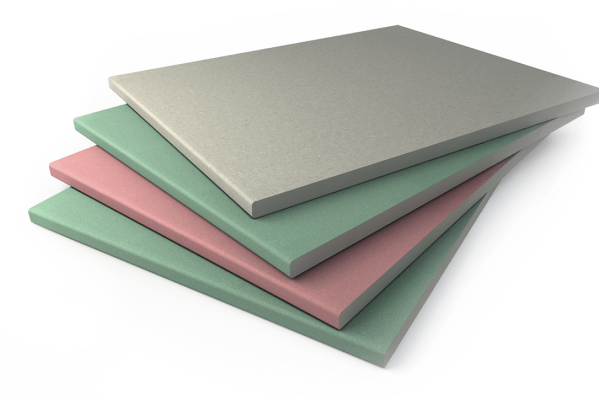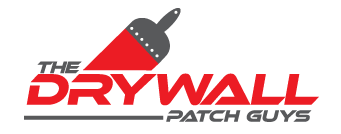Mastering Drywall Installation
Welcome to the ultimate guide to mastering drywall installation. Whether you’re a DIY enthusiast or a homeowner looking to understand the intricacies of this essential construction process, this comprehensive guide has got you covered.  In this article, we will delve into the importance of proper drywall installation, provide step-by-step instructions with valuable insights, and offer expert tips to help you achieve professional results. By the end, you’ll have the knowledge and confidence to tackle any drywall installation project with ease.
In this article, we will delve into the importance of proper drywall installation, provide step-by-step instructions with valuable insights, and offer expert tips to help you achieve professional results. By the end, you’ll have the knowledge and confidence to tackle any drywall installation project with ease.
I. The Significance of Active Drywall Installation Techniques
When it comes to drywall installation, employing active techniques is paramount. This section will explore the importance of using an active voice throughout the process. By actively engaging in the installation process, you can ensure better precision, efficiency, and overall quality. We will discuss the benefits of maintaining an active mindset, from accurate measurements and seamless joint connections to minimizing mistakes and achieving a flawless finish.
II. Preparing for Success: Proactive Measures for Drywall Installation
Success in drywall installation starts with thorough preparation. This section will guide you through the essential steps to take before embarking on the installation process. We will cover topics such as measuring and ordering the right quantity of drywall, preparing the work area, assembling the necessary tools, and gathering high-quality materials. Proactive preparation sets the stage for a smooth and efficient installation process.
III. Step-by-Step Active Guide to Flawless Drywall Installation
Follow this step-by-step guide to master the art of drywall installation. Each stage of the process, from marking stud locations and cutting drywall sheets to securing them firmly in place, will be explained in detail. Emphasizing an active approach, we will highlight the importance of maintaining focus, using precise techniques, and adapting to challenges along the way. By actively implementing each step, you’ll achieve outstanding results.
IV. Perfecting the Finish: Active Techniques for Taping, Mudding, and Finishing
The taping, mudding, and finishing stage is where your drywall truly comes to life. This section will delve into active techniques for achieving a seamless and professional finish. We will explore the precise application of drywall tape, mud, and successive layers of joint compound. Active sanding and priming techniques will also be covered, along with tips for achieving a flawlessly smooth surface ready for painting.
V. Active Solutions for Common Challenges and Professional Results
Every drywall installation project presents its own set of challenges. In this section, we will address common issues such as bulges, cracks, and nail pops, offering active solutions to overcome them. By actively troubleshooting and employing professional techniques, you’ll be able to tackle these challenges effectively, resulting in a polished and long-lasting finish. We’ll also share additional tips and insights to ensure professional results throughout the project.
Empowering Yourself with Expert Drywall Installation Skills
Congratulations on completing this comprehensive guide to mastering drywall installation. By actively engaging in each step, following expert techniques, and utilizing proactive measures, you are now equipped with the knowledge and skills needed to achieve outstanding results. Remember to prioritize safety, take your time, and seek professional assistance when necessary. With practice, you’ll develop the confidence to tackle various drywall installation projects, enhancing the aesthetics and functionality of your spaces.
FAQs
Q1: How long does it take to learn drywall installation?
A1: The time it takes to learn drywall installation can vary depending on your level of experience and the complexity of the project. Generally, with dedicated practice and following the techniques outlined in this guide, you can become proficient within a few weeks or months.
Q2: Can I install drywall myself?
A2: Yes, you can install drywall yourself, especially for smaller projects. This guide provides step-by-step instructions and expert tips to help you achieve professional results. However, for larger or more complex projects, it may be advisable to seek professional assistance.
Q3: What tools do I need for drywall installation?
A3: Some essential tools for drywall installation include a measuring tape, utility knife, drywall saw, screw gun, taping knife, and sanding block. This guide covers the necessary tools in detail during the preparation and installation sections.
Q4: How do I repair damaged drywall?
A4: Repairing damaged drywall involves assessing the extent of the damage, cutting out the damaged area, installing a patch, taping, mudding, and finishing. This guide primarily focuses on the installation process, but it briefly touches on repair techniques in the section on common challenges.
Q5: How can I achieve a smooth finish on my drywall?
Q6: Can I install drywall over existing walls?
A6: In some cases, it is possible to install drywall over existing walls. However, it is essential to assess the condition of the existing walls before proceeding. Ensure that they are structurally sound, free of moisture or mold issues, and properly prepared for the installation. Installing drywall over existing walls can provide a fresh, smooth surface for renovations or updates, but it may not be suitable for all situations. Consulting a professional is recommended for guidance.
Q7: How do I handle electrical outlets and switches during drywall installation?
A7: When installing drywall, it is crucial to account for electrical outlets and switches. Cut openings in the drywall sheets to fit around these fixtures, ensuring precision and safety. Take accurate measurements and use a drywall saw or rotary tool to create the openings. Exercise caution and turn off the power before working near electrical components. If you are unsure about working with electrical elements, consult a licensed electrician.
Q8: How do I estimate the quantity of drywall sheets needed for a project?
A8: To estimate the quantity of drywall sheets required, measure the length and height of each wall, multiply the dimensions to find the square footage, and add up the totals. Standard drywall sheets are commonly available in 4’x8′ or 4’x12′ sizes. Divide the total square footage by the area coverage of each sheet to determine the number of sheets needed. It is advisable to account for waste, cutting, and any special considerations when ordering to ensure you have sufficient materials.
Q9: How do I prevent nail pops in my drywall?
A9: Nail pops occur when the drywall nails or screws push through the surface, creating a visible bump. To prevent nail pops, ensure that the drywall is properly fastened to the studs or framing. Use the right length of screws or nails and space them evenly. Additionally, consider using adhesive in conjunction with fasteners for added stability. If you notice a nail pop, remove the fastener, secure the drywall, and patch the area using joint compound.
Q10: Can I use drywall adhesive instead of screws or nails?
A10: Drywall adhesive can be used in conjunction with screws or nails to enhance the stability and longevity of the installation. Applying adhesive on the backside of the drywall sheets before securing them to the studs or framing can provide additional support. This technique is especially useful for ceilings or areas prone to vibration. However, it is essential to follow the manufacturer’s instructions and use the adhesive sparingly to avoid excessive squeezing or oozing.
Congratulations! You’ve reached the end of this comprehensive guide on mastering drywall installation. By following the step-by-step instructions, incorporating active techniques, and referring to the expert tips provided, you now have the knowledge and skills to achieve professional results. Remember to prioritize safety, take your time, and seek professional assistance if needed. With practice and experience, you’ll become proficient in drywall installation and enhance the aesthetics and functionality of your living spaces. Happy drywalling!

